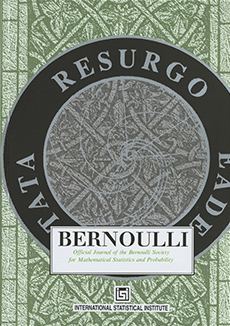Abstract
The efficiency of Monte Carlo simulations is significantly improved when implemented with variance reduction methods. Among these methods, we focus on the popular importance sampling technique based on producing a parametric transformation through a shift parameter $\theta$. The optimal choice of $\theta$ is approximated using Robbins–Monro procedures, provided that a nonexplosion condition is satisfied. Otherwise, one can use either a constrained Robbins–Monro algorithm (see, e.g., Arouna ( Monte Carlo Methods Appl. 10 (2004) 1–24) and Lelong ( Statist. Probab. Lett. 78 (2008) 2632–2636)) or a more astute procedure based on an unconstrained approach recently introduced by Lemaire and Pagès in ( Ann. Appl. Probab. 20 (2010) 1029–1067). In this article, we develop a new algorithm based on a combination of the statistical Romberg method and the importance sampling technique. The statistical Romberg method introduced by Kebaier in ( Ann. Appl. Probab. 15 (2005) 2681–2705) is known for reducing efficiently the complexity compared to the classical Monte Carlo one. In the setting of discritized diffusions, we prove the almost sure convergence of the constrained and unconstrained versions of the Robbins–Monro routine, towards the optimal shift $\theta^{*}$ that minimizes the variance associated to the statistical Romberg method. Then, we prove a central limit theorem for the new algorithm that we called adaptive statistical Romberg method. Finally, we illustrate by numerical simulation the efficiency of our method through applications in option pricing for the Heston model.
Citation
Mohamed Ben Alaya. Kaouther Hajji. Ahmed Kebaier. "Importance sampling and statistical Romberg method." Bernoulli 21 (4) 1947 - 1983, November 2015. https://doi.org/10.3150/14-BEJ622
Information





